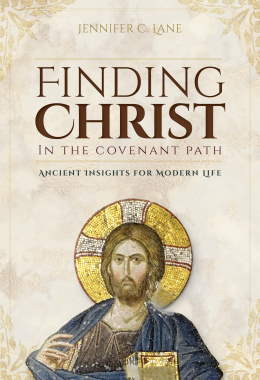Relics
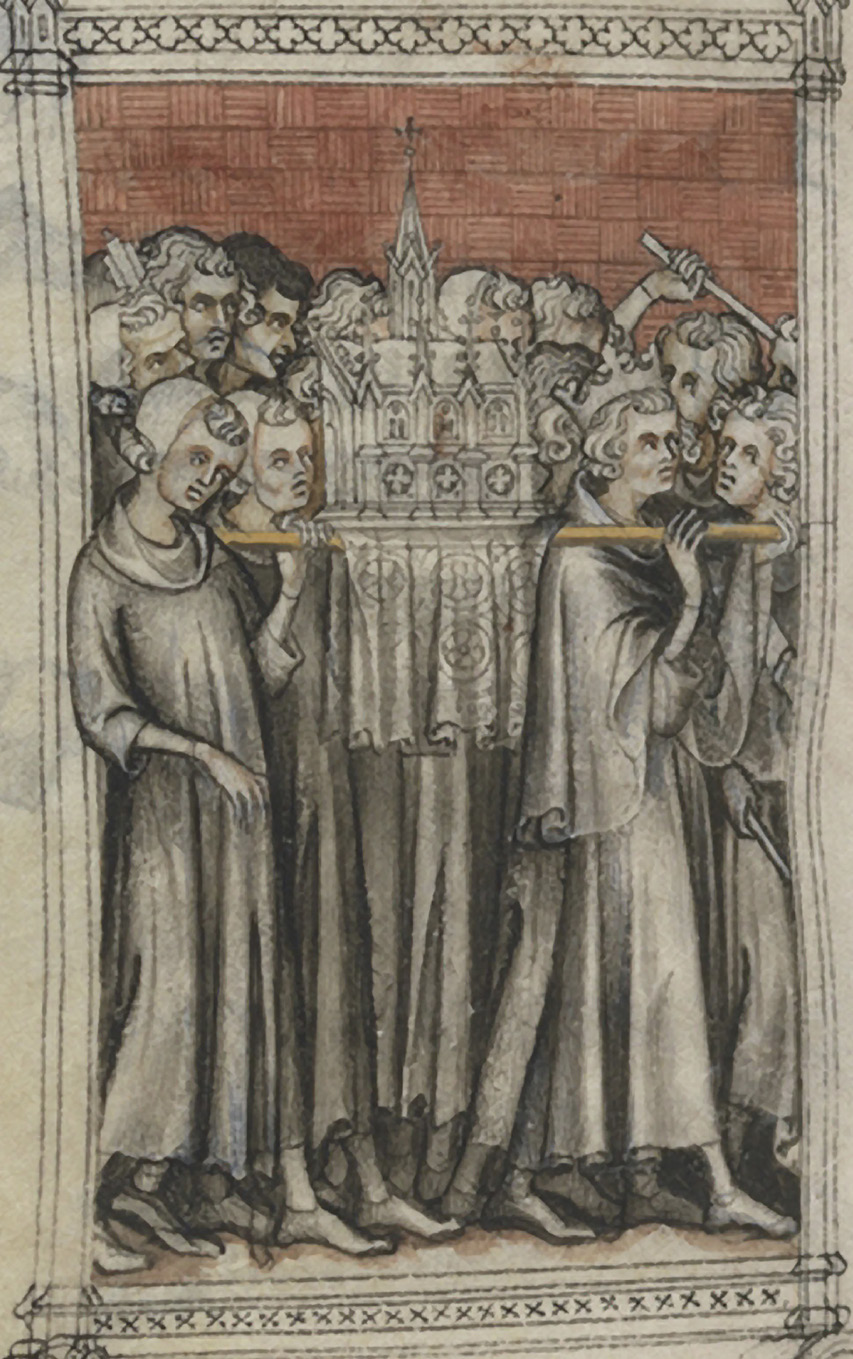 Procession of relics. The remains of the saints were seen as a means of access to holiness and God’s power. Jean Pucelle, The Hours of Jeanne d’Evreux, Queen of France, fol. 173v, detail, ca. 1324–28. The Metropolitan Museum of Art, New York, The Cloisters Collection, 1954. www.metmuseum.org (CC0 1.0).
Procession of relics. The remains of the saints were seen as a means of access to holiness and God’s power. Jean Pucelle, The Hours of Jeanne d’Evreux, Queen of France, fol. 173v, detail, ca. 1324–28. The Metropolitan Museum of Art, New York, The Cloisters Collection, 1954. www.metmuseum.org (CC0 1.0).
My mother passed away when I was thirty-four, and she was buried in a peaceful cemetery overlooking Provo, Utah. I don’t live in Utah, but when I come to visit family I also go to say hi to Mom. I know that her spirit may be elsewhere, busy in the work of the spirit world, but her gravesite is where her body is buried, and so she is still there in a sense. Walking over to her tombstone and saying hi, telling her that I love her, gives a sense of connection and anticipation of the resurrection. I know that I will see her again, that her spirit and body will be reunited, and that I will be able to give her a hug. In the meantime, it’s nice to have a feeling of connection.
In the early days of Christianity, after the era when Christians were martyred but while that memory was still fresh, Christians would go to the graves of the martyrs.[1] They believed in the bodily resurrection, but they knew that while their bodies waited in the ground, the spirits of the martyrs were alive in the presence of God. They sought out a relationship with those martyred saints by being close to them. They wanted to take those saints as a patron, much like patrons in the Roman world of late antiquity in which they lived. In the Roman world, wealthy and powerful people were patrons who had clients that depended on them. By taking care of their clients, the patrons showed their power and, in return, the clients would praise and honor their patron.
The early Christians who took these saints as patrons believed that those saints would put in a good word for them with God and Christ, who were more powerful but seemed less accessible. The Christians had faith that God and Christ could be approached by the saintly martyrs whose spirits were in their presence. These early Christians believed that by going to the martyrs’ tombs they would be in the presence of the saints’ physical bodies. The saints’ physical remains provided a means of contact with beings in the presence of God. In time, the saints’ remains became more mobile. Through relics, the physical remains of the saints, along with their holiness, could be moved to other sites and thereby become accessible for more people.[2] Even divided, a part of the saint’s body represented the whole. The early saints were understood to be present in these relics. The relics were a physical means by which people could feel close to a holy being that was not only there with them but was also in the presence of God.
Relics throughout Europe
Relics became even more important as the early Middle Ages moved toward the central Middle Ages—it became a requirement that churches be built on the site of a martyr’s body. As Christianity spread further north, beyond the range of the early martyrs, the movement of relics was essential to spread the holiness they were believed to embody. Having the remains of the martyr meant that the saint was present. The presence of the saint brought the individuals who worshipped there closer to the presence of God. For example, the cathedrals built in the central Middle Ages had relics as part of their foundation, typically beneath the high altar.
These cathedrals represent a time of greater urbanization and trade. As cities became larger, the people wanted to make statements about the importance of their cities, as well as showing their devotion by having the biggest and best architecture. As a missionary I served in two cities that had been important in medieval France and often biked past these magnificent structures. Saint-Étienne Cathedral in Limoges was a soaring Gothic church, and Saint Front in Périgueux was a remarkable multidomed building, which, I learned later, was modeled after St. Mark’s in Venice. Hundreds of years after their heyday, these cathedrals continued to portray the faith of their era. They were not places where I went to worship, nor were they for many others, but it was clear that they had been the central point of their respective cities when they were built.
Not everyone lived in large cities or towns, but these churches had a broader influence. In addition to having a relic under the high altar, displaying relics for pilgrims also became an important draw for churches. Relics were placed in reliquaries that were sometimes designed like miniature gold- and gem-encrusted caskets or churches; they also sometimes depicted the shape of an arm or a head. People longed to be in contact with the holiness represented by these saints, and many traveled long distances to churches with relics.
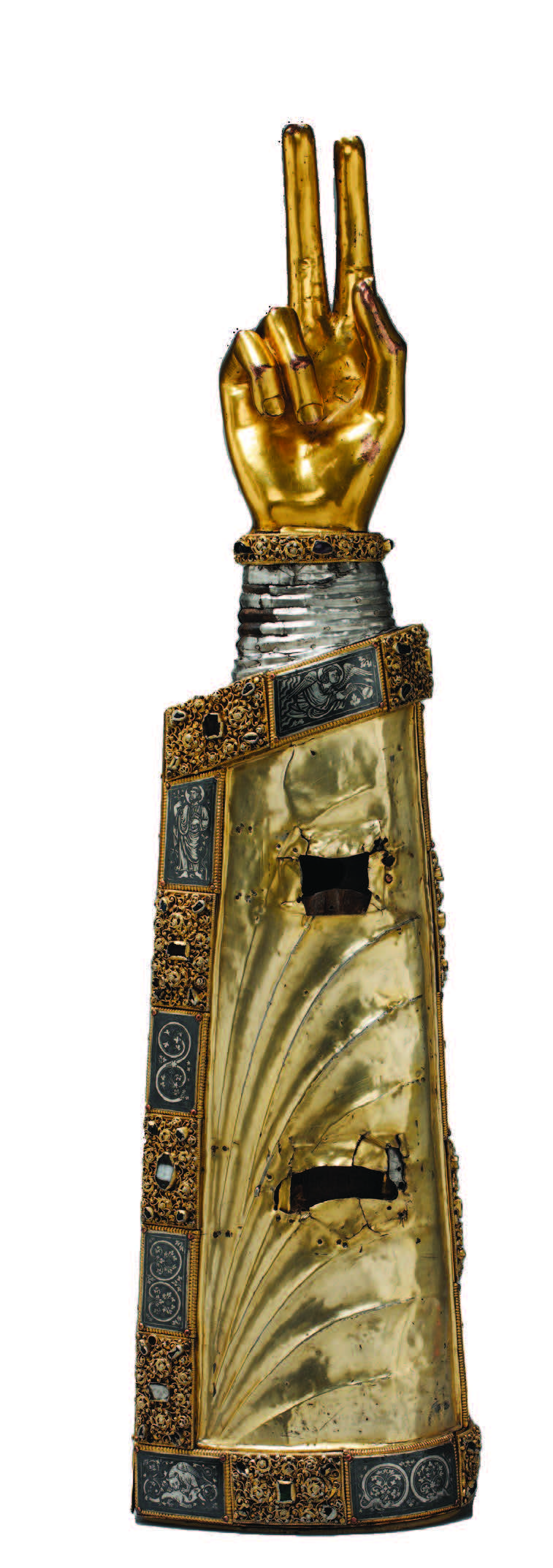 Relics provided a material connection to the presence of holy beings whose spirits were with God. Arm reliquary, ca. 1230. The Metropolitan Museum of Art,
Relics provided a material connection to the presence of holy beings whose spirits were with God. Arm reliquary, ca. 1230. The Metropolitan Museum of Art,
New York, The Cloisters Collection, 1947.
In this world of great cathedrals and monasteries, the clergy were divided into two groups, religious and secular. The monks and nuns were called the “religious.” Ordinary people as well as nobles essentially delegated the responsibility of being holy to the monks. Their canonical hours of prayers allowed the blessings of God to be poured out on nearby towns and the noble families that supported them. The “secular” clergy, the priests and bishops who were out in the world (thus earning the term secular), were also important. They helped with the sacraments that were seen as necessary for salvation, but the monasteries had a privileged place as the site of learning and study. Local priests were often very poorly educated.
In the monasteries, as monks studied and copied sacred texts, there arose some important concepts that changed the European religious world. The focus on Christ gradually moved away from the perception of a distant divinity, removed from human experience and sympathy that had required the saints to act as patrons. Instead, the focus on the humanity of Christ as the source of salvation grew. This devotion to Christ’s mortal life led to new ways of thinking about salvation.[3]
The earlier medieval depiction of Christ as the stern and terrifying judge at the last day helped explain the need for patron saints to put in a good word for us. In this new monastic focus, there was instead a greater appreciation of Christ himself being our intercessor through his own suffering and blood. This later focus on the humanity, or physical aspect, of Christ emphasized his suffering as a substitute for our suffering. This can be seen in St. Anselm’s (1033/
During this later medieval period we start to see many more images of the suffering Christ in art as a way to show God’s love. We also see the rise of devotion to Mary. It was understood that through her, Christ became human and received his physical body.[5] His flesh was her flesh. The experience of communion, or Eucharist, meaning the sacrament of the Lord’s Supper, also became much more important because it was a way to connect with the body of Christ. During this era we see new concepts of the real presence and doctrine of transubstantiation, which emphasized that with the consecration by the priest, the bread and wine maintained the appearance of bread and wine but became Christ’s body and blood in a way that could not be seen. Holiness was found in Christ’s body and in his incarnation, not just in the bodies of the saints. One example of this can be seen in which the holiness of a consecrated host, the wafer or bread of the sacrament, came to be seen as a replacement for a relic in the consecration of the church.
While many of these specific doctrines are not ones that we hold as members of The Church of Jesus Christ of Latter-day Saints, I can see the Spirit of the Lord working on a people and moving their hearts and minds toward a love of Christ and a confidence in his atoning suffering and death. The devotional practices of that era reflect an extremely deep appreciation and gratitude for the love of God manifest in the suffering and death of Christ. This is what we call passion piety, devotion focused on his passio or suffering. This is where we start to see all the images of Christ suffering and bleeding. A focus on Christ’s passion means a focus on Christ’s suffering. Medieval religious meditations on the suffering and death of Christ didn’t deny the reality of the resurrection but were instead expressions of gratitude that we could be saved in and through the atoning blood of Jesus Christ.
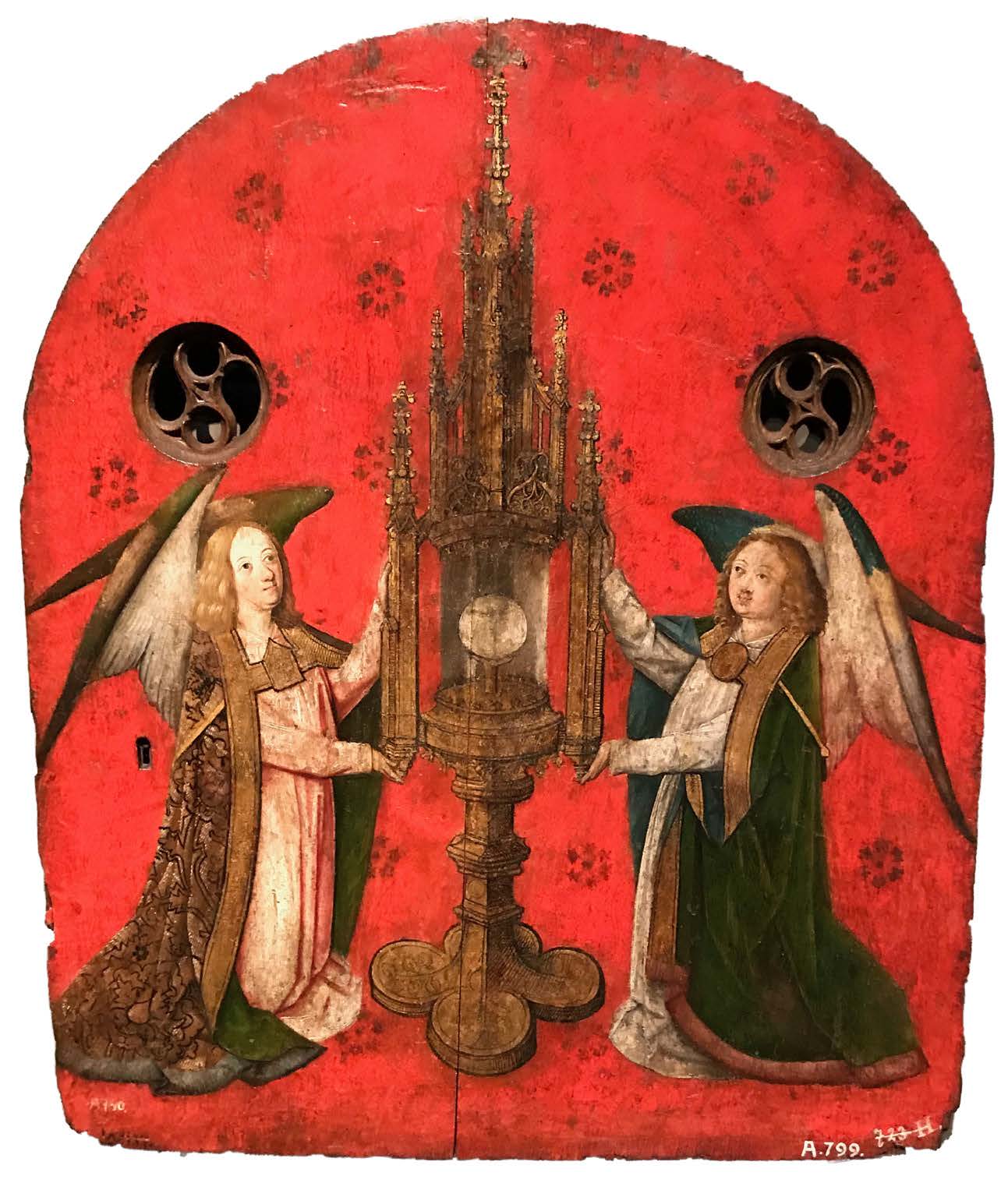 Later in the Middle Ages emphasis was shifted to encountering the presence of Christ through passion relics or the consecrated host (sacrament bread), which was often displayed for viewing in a transparent receptacle known as a monstrance. Sacrament cupboard door, fifteenth century. Museum Schnütgen, Köln.
Later in the Middle Ages emphasis was shifted to encountering the presence of Christ through passion relics or the consecrated host (sacrament bread), which was often displayed for viewing in a transparent receptacle known as a monstrance. Sacrament cupboard door, fifteenth century. Museum Schnütgen, Köln.
Into this world of increasing focus on Christ as the source of salvation came the Franciscan and Dominican movements in the 1200s, the thirteenth century. Earlier in the Middle Ages, Benedictine monks in the monasteries often became very wealthy because of the donations made to them by wealthy people seeking for blessings; but then, as the monks’ lives became more comfortable, people sometimes wondered if this comfort kept them from living lives that allowed them to properly intercede and pray on their behalf. There were various monastic reform movements, but the tendency to slip into a luxurious lifestyle kept recurring.
The Franciscans and Dominicans were new kinds of monks: poor monks. They were called mendicants, which means “beggar.” They didn’t stay cloistered in monasteries praying but traveled and taught people in towns, getting them excited about the message of Christ’s sacrifice and love and encouraging them to live lives of holiness. One example of this encouragement to holiness is found in a fourteenth-century religious text influenced by Franciscan piety called the Vita Christi or Life of Christ: “We ought to carry the Cross of our Lord and help Him to bear it, with our hearts by pious remembrance and compassion, with our lips by frequent and devout thanksgiving, with our whole body by mortification and penance, and thus give thanks to our Saviour by our affections, words and deeds.”[6] The mendicants showed and taught that one’s whole being needed to be an expression of love for God and gratitude for the gift of his Son.
Passion Relics
Throughout the Middle Ages, pilgrims had traveled to Jerusalem, but with the rise of the Crusades in the eleventh and twelfth centuries, a greater number of Europeans traveled to the Holy Land. In fact, the increased exposure to the physical realities of Christ’s mortal experience is believed to have factored into the shift in theology toward a meditation on the human dimension of Christ’s life, suffering, and death. Pilgrims and crusaders brought back not just descriptions of the holy sites of Jerusalem but also physical remnants that connected people with the life of the Savior—things like stones, earth, or objects associated with the birth or the passion of Christ, such as fragments of the cross, sponge, nails, spear, and so forth. So, just as physical remnants of the holy saints and martyrs of early Christianity had been a source of access and power for many centuries, in the later Middle Ages, physical connections to the life and death of the Son of God became treasured as passion relics.
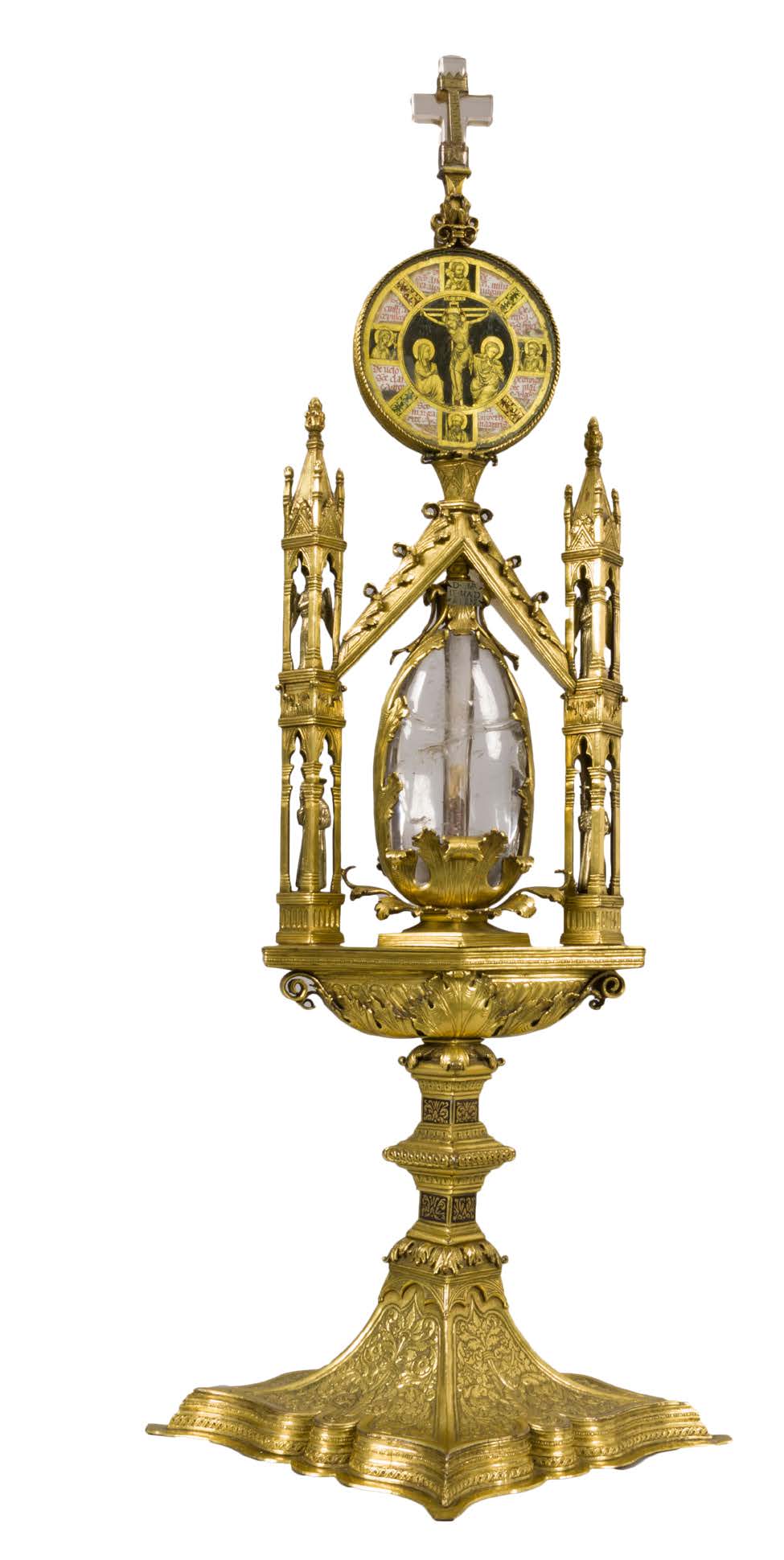 Crystal and gold reliquaries pointed to the spirit of the saint dwelling in heaven. Reliquary of Mary Magdalene, fourteenth and fifteenth centuries. The Metropolitan Museum of Art, New York, Gift of J. Pierpont Morgan, 1917.
Crystal and gold reliquaries pointed to the spirit of the saint dwelling in heaven. Reliquary of Mary Magdalene, fourteenth and fifteenth centuries. The Metropolitan Museum of Art, New York, Gift of J. Pierpont Morgan, 1917.
Some of these objects had already been preserved and treasured by Eastern Christians in Constantinople and other sites, but many of those relics were now brought back for Western Christians. This helped to fuel passion devotion. Seeing holy objects that pointed to Christ became a central concern in this era. Just as the faithful could look at what they understood as Christ’s body in the form of the sacramental host (bread) visibly displayed in a monstrance (a decorative case that held up the host for veneration), relics were also increasingly displayed in reliquaries that were made of glass or crystal.[7] Along with the jewels and gold that often were part of these reliquaries, the crystal containers of these relics pointed to the heavenly status of the saint whose bodily fragment was displayed in the reliquary but whose spirit was in the presence of God.
A classic example of a passion relic is the crown of thorns displayed in Sainte Chappelle in Paris. The extraordinary stained glass windows of Sainte Chappelle allowed the entire church to function as a light-filled, colorful reliquary, a precious setting for a precious treasure. The relics were destroyed during the French Revolution, but the church remains as a premier example of Gothic architecture. The king of France showed his devotion to Christ by obtaining passion relics from Constantinople around 1240. In 1248 the amazing church of Sainte Chappelle was consecrated as a place for the French kings to hold their greatest treasure, the crown of thorns. In addition to this premier relic of passion piety, the church’s collection included other objects associated with Christ’s suffering, including fragments of the lance (spear), sponge, cross, and burial shroud.[8] We see here the continuity of relic devotion from the early Christian period but with a shift to passion piety, the focus on Christ’s suffering and death.
What can we make of this as Latter-day Saints? Like the Protestants of the Reformation, it is easy to scoff at the number of fragments of the True Cross that are reported to be housed in churches and reliquaries throughout Europe. We are better served, however, if we think about what these tangible connections with the life of Christ were doing for them and what role physical connection with the past and with holiness has for us.
Relics and History
In the Sacred Grove there are some trees that are very old. They are known as “witness trees.” They were around during the appearance of the Father and the Son to Joseph Smith in 1820. If all the trees that had been alive at that time had died, it would not change what happened. If the entire grove burned down and was covered over with pavement, it would not change what happened. The trees aren’t essential to connect with sacred history, but there is still something powerful and awe-inspiring about being able to walk through that bit of forest. I grew up in Virginia and have walked in many Eastern forests with towering trees and forest undergrowth, but there is something special about being in Palmyra and thinking, “This is the place. This is the place where God revealed himself and introduced his Beloved Son.”
Physical connections with the past bring memories. We go back to our childhood home, and we see, smell, and hear what we experienced in our youth. We know we are not in the past, but the past seems closer, and place brings it to mind in a fuller, more experiential way. These memories might be happy or sad, but being in a specific place or touching something from that place offers a bridge to what was.
While place is not transportable, matter is. I can be anywhere and open a box of my mission letters from France or a box of my father’s mission letters from Germany or the record book from my grandfather’s mission in England, and a bridge to that past experience opens up. Not even reading them, but just experiencing the physical presence of these records is powerful. The stamps and special airmail envelopes speak of an era of distance and slower communication. They speak of faith and devotion to live in a foreign land to share the message of the gospel of Jesus Christ. Keeping family records, heirlooms, and memories can be a powerful way to bring the past to mind, to make the experience of others real to us today.
As a church, we put an emphasis on Church history as well as on family history. There are many beautifully preserved and restored Church history sites. We can essentially go on pilgrimage to feel a connection with the events in Palmyra, New York; Kirtland, Ohio; Independence, Missouri; and Nauvoo and Carthage, Illinois. For those who are not able to travel to those sites, the Church produces beautiful films recounting the history and sharing the visual experiences of being in those sacred places. If we do get to travel, we can bring back physical reminders of the places for ourselves or to share with friends. Just as I have little clay oil lamps from a trip to Jerusalem, I also have a replica copy of the first edition Book of Mormon from Palmyra that I can handle and show others. I have little red bricks from Nauvoo, bringing to mind the Red Brick Store where the Relief Society was organized and the temple endowment was first administered. We don’t believe these physical reminders bring salvation, but we don’t shun them, in hopes of having a purely spiritual and nonmaterial connection with God and sacred history.
Tangible Connection with Christ
Where then do we find the physical that points to salvation? Where do we find the connection with Christ’s suffering and death that people honored in their reverence for remnants of the cross, the nails, the spear, the sponge, the crown of thorns, or the cloth that wiped Christ’s forehead? In the later Middle Ages, even a tiny scrap of any of these sacred passion relics was sufficient to justify building a monumental church, starting a special feast day, or setting out on a long pilgrimage to make a connection with a piece of something that had been there with Christ. The idea that some physical remnant could bring his presence closer brought great joy and devotion. People traveled for many miles to see or touch something that the Savior had touched.
There is a parable in Matthew 24 that I love to explore with my classes. It sounds a little disturbing and sinister at first. “For wheresoever the carcase is, there will the eagles be gathered together” (24:28). I ask who has seen eagles or vultures flying in circles. People know that this circling means these scavengers have found something dead to eat. These birds get life from the death of other animals. Then we look at the Joseph Smith Translation in the Pearl of Great Price. “And now I show unto you a parable. Behold, wheresoever the carcass is, there will the eagles be gathered together; so likewise shall mine elect be gathered from the four quarters of the earth” (Joseph Smith—Matthew 1:27). We then talk about where we gather as Saints in all the quarters of the earth and what we gather for. This gathering is a sign of the last days and points to what is now available through the restoration of priesthood keys.
We gather together for sacrament meetings. We gather together in temples. We gather together because that is where we are nourished. That is where we find life through the death of the Son of God. This is why we are gathered. I don’t think it is a coincidence that the white cloth covering the emblems of the sacrament looks like a burial shroud.
Christ said, “This is my body” and “This is my blood.” He also said, “Take, eat” and “Drink ye all of it” (Matthew 26:26–28). We don’t have to develop any kind of elaborate theory of real presence or transubstantiation to make sense of what he is trying to tell us. Even though the bread and water are offered to us, we have to reach out and take the emblems for ourselves. We put the bread and water into our mouths. Christ wants to be present for us and in us, and we can choose to receive what he is offering. He wants to connect with us and allow us to connect with him. He wants to lift us in the most physically elemental way that we know, by feeding us and quenching our thirst.
When I read the Gospel of John with students, we talk about how long we can live without food and how long we can live without water. We all know that we are completely dependent on outside substances to maintain our life. The Gospel of John teaches that Christ has come to be the bread of life and the living water. Christ wants us to connect with him through his Spirit, but he also provides a physical, tactile way for us to encounter his suffering and death. He wants what he experienced to be real for us. As we partake of broken bread we can ponder the hymn: “Bruised, broken, torn for us on Calvary’s hill—thy suffering borne for us lives with us still.”[9]
In the suffering and death of Christ, we find the love of God that feeds the deepest hunger of our souls. He invites us to come unto him, just as he did to the multitude at the temple in Bountiful after his resurrection. In our sacrament meetings, he wants us to be able to touch and taste the love that he has for us. In the ordinances of the temple, he also offers us a way to feel and touch the love that he has for us. He wants the historical reality of his suffering and death to be present for us. The ordinances allow us to bridge the historical distance. They connect us with the reality of his atoning sacrifice and redeeming love.
Notes
[1] The classic discussion of this topic is Peter Brown, The Cult of the Saints: Its Rise and Function in Latin Christianity (Chicago: University of Chicago Press, 1982).
[2] The classic study of the movement of relics is Patrick J. Geary, Furta Sacra: Thefts of Relics in the Middle Ages, rev. ed. (Princeton, NJ: Princeton University Press, 1991).
[3] An early Christian framework to think about salvation, known as the Christus Victor theory, had portrayed human salvation as a divine victory over death and hell. In this way of thinking, the devil thought he had won by having Christ killed but then found that he could not keep the divine Christ in hell as he broke out, bringing others with him.
[4] Bernard of Clairvaux, “Jesus, the Very Thought of Thee,” trans. Edward Caswall, in Hymns (Salt Lake City: The Church of Jesus Christ of Latter-day Saints, 1985), no. 141.
[5] Caroline Walker Bynum gives an important discussion of the understanding of Christ’s flesh as Mary’s flesh in Holy Feast, Holy Fast: The Religious Significance of Food to Medieval Women (Berkeley: University of California Press, 1998).
[6] Ludolph of Saxony. Vita Christi. Selections found in The Hours of the Passion Taken from “The Life of Christ” by Ludoph the Saxon, ed. Henry J. Coleridge (London: Burns and Oates, 1887), 7; emphasis added.
[7] An excellent discussion of reliquaries and their different forms throughout Christian history can be found in Cynthia Hahn, The Reliquary Effect: Enshrining the Sacred Object (London: Reaktion Books, 2017).
[8] Daniel Weiss, Art and Crusade in the Age of Saint Louis (Cambridge: Cambridge University Press, 1998), 221n15.
[9] Hugh W. Dougall, “Jesus of Nazareth, Savior and King,” in Hymns, no. 181.
